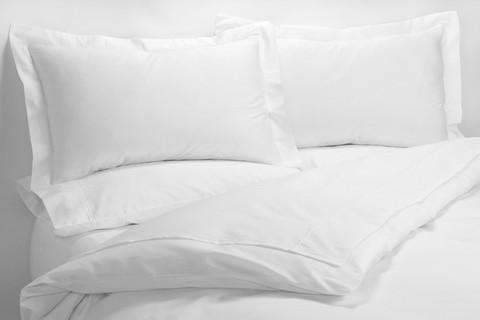
Buying Guide - Summer Weight Duvet Trends
Let’s be real. It’s pretty darn hot. You may even live in an area where it is unbearably hot right now. You’re probably doing whatever you can just to stay comfortable at this point, like sitting by a fan, floating in a pool, or eating your weight in popsicles. Nighttime is no exception. In fact, the heat is even more intolerable at night while you’re trying to sleep! The last thing you want to think about are the blankets that you probably kick off throughout the night anyway. But, did you know that your bedding plays a key role in your sleep comfort? You might be surprised to learn that you can even use a duvet comforter in the heat of summer!
WHY DUVET?
Sometimes the terms duvet and down comforter are used interchangeably. However, they aren’t exactly the same. Both duvets and down comforters are filled bed coverings. Down comforters are typically filled with goose feathers, while duvets can be filled with a wide range of materials like real or synthetic down, polyester, or wool.
Duvets need duvet covers, which offer the advantage of flexibility. You can remove just the cover for washing, and easily change the overall look of your bedroom by a simple switch in pattern or color.
DUVET FILLINGS
As far as duvet fillings go, the options are practically limitless. If you choose to go the more natural route, there are goose feathers or duck feathers. Down is soft and light, while feathers tend to be firmer as they contain the quills as well. The higher the ratio of down, the lighter and softer your duvet will be. Duck down and feathers tend to be heavier and less expensive than their luxurious goose counterparts.

Some people have allergies to down and are unable to sleep in down duvets. This is where fiber filled duvets come in handy! Wool filled duvets work really well for regulating body temperature and reducing night sweats. Silk filled duvets are great at resisting dust mites. For a synthetic fill option, microfiber (aka polyester fill) is a fantastic alternative to down. It is overall pretty similar to natural down, while maintaining a light and soft feel. Synthetic fibers are also practical – you can throw these in your washer and dryer!
Duvet Weights & Warmth Ratings
Duvets come in various weights and warmth levels, depending on the time of year you’re planning to use it. Weight and warmth is determined by TOG ratings – or the amount of body heat the duvet retains. The higher the TOG number, the warmer the duvet will be. For instance, in the dead of winter, a TOG rating above 13.5 will keep you plenty warm.

For these hot summer months, a lightweight duvet with TOG ratings between 3-4.5 are generally recommended. You may be able to find lower TOG ratings by researching several manufacturers.
Another option you may want to consider is an all-season duvet. These are usually two low-TOG duvets that can be used during the warmer months, but also can be buttoned together (giving you a higher TOG rating) for the cooler winters. Sometimes the two duvets will have different warmth rates and essentially provide you with three TOG ratings, depending on how you choose to use them.
As a side note, don’t base your entire purchase solely on TOG ratings. The temperature of your room at night, the filling material, your body temperature, and other personal preferences should all be considered before choosing the right duvet. Also, keep in mind the maintenance that will be needed for your duvet. You’ll want to ponder on how often you’ll need to clean it, and whether or not you can machine wash it.
As you can see, there are many options for staying cool and comfortable during the summer. You don’t have to kick the blankets off every night!
